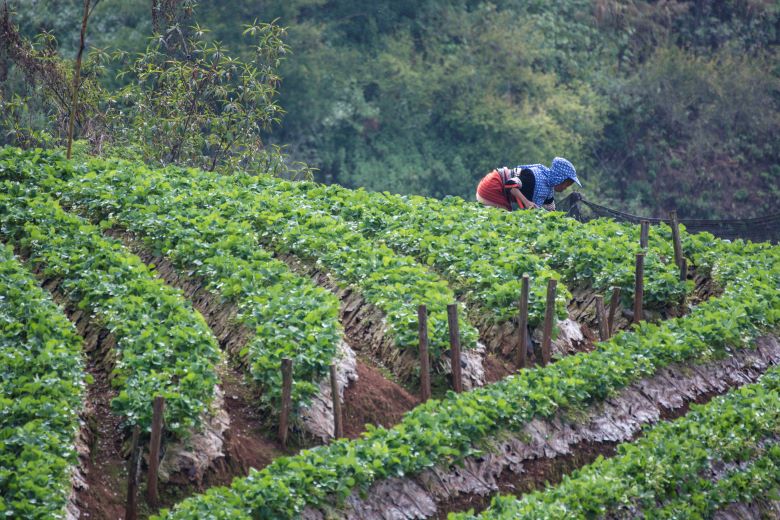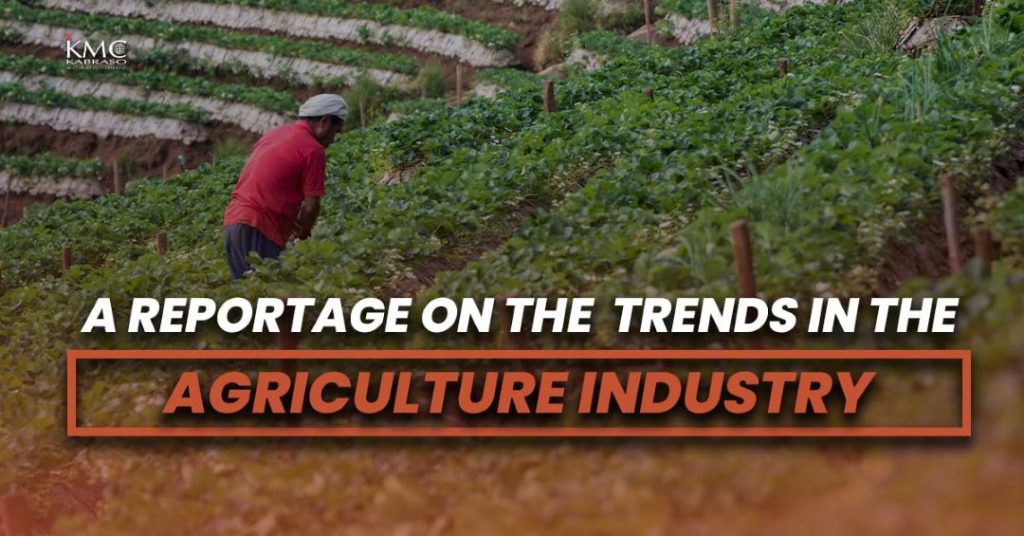In an archipelagic country such as the Philippines, where grasslands span thousands of square miles, agriculture practice emerges as the only logical and primary source of livelihood for many of our communities—for rural communities most especially.
The Agriculture Industry Over the Years
As we discuss the agriculture industry, it is only appropriate for us to recognize its contributions to society, both in the economic and social aspects. Economically, from 1998 to 2009, the agriculture sector accounted for 13.5% of the Philippines’ total gross domestic product (GDP). At one point, its once-steady contributions dipped to 10%[1].
However, it is worth noting that this decline does not equate to a shrink in crop production. Rather, it shines a light on the different structural transformations that the agriculture sector has stood witness to. Political hurdles such as the Russian-Ukraine war, global security threats in the form of the COVID-19 pandemic, rising inflation, the decreasing number of individuals choosing to pursue careers in the agriculture sector, and natural calamities are all factors that have a direct impact on the crop and fisheries production of the country[2].
But despite these challenges, the agriculture industry continues to be a primary contributor to society, and in 2023 was able to economically provide 9% of the Philippines’ GDP.
In the social aspect of things, the agriculture industry was able to provide employment opportunities to around 25% of the 49.7 million Filipinos in the labor force. It has also extended support to other forms of agricultural livelihoods: fishing, raising livestock, and other non-farm activities. All of that said, the agriculture industry is a vital component of the country’s landscape.
Perennial Challenges the Agriculture Industry Faces
As a vital component of the Philippine economy, the agricultural sector plays a fundamental role in sustaining livelihoods, ensuring food security, and contributing to national economic growth. However, it is not immune to a myriad of challenges that significantly affect its overall development and stability. Let’s further discuss the perennial issues plaguing the agriculture sector in the Philippines:
Land Fragmentation
As land is passed down through generations, it gets divided into smaller and less economically viable plots. This fragmentation hampers the adoption of modern farming practices and mechanization, as small-scale agribusinesses struggle to achieve economies of scale.
Labor Migration
Rural poverty remains a persistent issue in the Philippines, with many agricultural communities experiencing poverty and food insecurity. As a result, there is a significant trend of labor migration from rural to urban areas and overseas in search of better opportunities.
Access to Finance and Market Opportunities
Access to finance and market opportunities remains a significant barrier for many Filipino agribusinesses, especially smallholders and marginalized groups. Limited access to credit, high interest rates, and inadequate market linkages hinder the growth and profitability of agricultural enterprises.
High Equipment Costs
Farmers struggle to access markets and often sell their produce at low prices due to a lack of bargaining power [3]. Many farmers do not even have enough capital to plant and maintain their farms, let alone buy machinery.
Inadequate Management Programs on Soil, Pests, and Diseases
Pests and crop diseases leave crops vulnerable to damage and reduce agricultural productivity. While there have been initiatives to study integrated pest management (IPM) strategies, their reach and impact remain limited.
Inefficient Agricultural Supply Chain
Without an efficient logistics and transportation system, the delayed delivery of fresh produce can result in spoilage and low-quality products, and without sugarcoating it for agricultural businesses, such an occurrence can lead to a business loss.
Industry Trends and Developments
Despite ongoing challenges in the agriculture sector, there have been gradual but significant developments aimed at mitigating their effects and revitalizing the industry’s former vitality. Efforts have been underway to address issues such as technological trends, organic farming efforts, and climate change-resilient techniques. These steps are crucial in restoring the agriculture sector to its former glory, ensuring sustainable growth, and securing food security for the future.
Technological Advancements
The Philippine agriculture sector has been pushing the adoption of precision agriculture, hydroponics, and vertical farming, especially in urban areas, promoting efficient land use and resource optimization
Shift towards Organic Farming
Concerns about the environmental impact of conventional agriculture, coupled with the growing global demand for organic produce have led agribusinesses to explore sustainable farming methods.
Climate Change Resilience
To improve climate change resilience, various organizations have been implementing measures, such as the development of drought-resistant crop varieties, to build climate resilience in the agriculture sector.
Agribusiness Innovation
There has been a noticeable increase in investment and the establishment of agribusiness start-ups in the Philippines. These start-ups often focus on technology-driven solutions such as precision farming, agricultural biotechnology, and farm management software.
What is an Agribusiness?
Agribusiness typically refers to the commercial activities associated with agriculture. These encompass the management of farms, the production and distribution of agricultural equipment and supplies, as well as the processing, storage, and distribution of agricultural products.
The Philippine Agribusiness sector is comprised of five (5) major subsectors, namely: a) crop production, b) animal production, c) forestry and logging, d) fishery (including aquaculture), and e) agri-support services and manufacturing.
Scope of the Agribusiness Sector
The agribusiness sector encompasses a wide array of activities within the agriculture industry, making it challenging to precisely define its scope. As previously mentioned, this sector is involved in various stages including producing inputs, managing farms, processing food and non-food products, manufacturing equipment and supplies, as well as engaging in trading and retailing.
Challenges of the Agribusiness Sector
Straight to the point: the very issues that hamper the agriculture sector are also the same challenges that hinder agribusinesses from reaching its full potential since the core of the agribusiness sector, after all, is the agriculture industry itself.
Obstacles such as labor migration, fluctuating operation costs, and supply chain gap not only impact crop yields, but also necessitate innovative solutions and strategic adaptations within the agribusiness industry.
Kabraso As a Service Provider For the Agriculture Sector
For Kabraso Multipurpose Cooperative, we lean on our core values and innovative approaches to continue providing exceptional services to our clients across the agribusiness sector. Because beyond its economic significance, the Philippines’s agri industry can certainly use some help. We say this in the context of the following:

1. Mechanizing Farm Activities

2. Bridging the Agricultural Supply Chain Gap

3. Addressing the Shortage of Agriculture Workforce
Conclusion
The agriculture sector in the Philippines remains a cornerstone of the nation’s economy and social fabric. From contributing to the GDP to providing employment opportunities and supporting diverse agricultural livelihoods, its significance cannot be overstated. Despite economic fluctuations and structural transformations, the industry persists, economically contributing 9% of the Philippines’ GDP in 2023 and employing around 25% of the labor force.
As the industry evolves, it adapts to modern trends and challenges. Technological advancements, a shift towards organic farming, and climate change resilience initiatives mark key trends. However, challenges such as land fragmentation, rural poverty, and limited access to finance persist.
Yet in the face of these challenges, service providers must steadfastly persevere. In this landscape, Kabraso Multipurpose Cooperative plays a crucial role as a service provider. By offering total service contracting solutions to agribusinesses, helping streamline the agricultural supply chain through strategic partnerships, and providing flexible staffing solutions, Kabraso contributes to the industry’s efficiency and resilience. Through these efforts, Kabraso aims to support the growth and sustainability of the agriculture sector in the Philippines.

Are You Up For a Quick Talk?
If you need a trusted and turnkey partner for your agricultural needs, remember the name: Kabraso. We are a workers cooperative that lives up to our earnest name which translates into a partner.
Contact us today to explore how Kabraso can help streamline your agribusiness and drive sustainable growth.


What are the five major subsectors of the Philippine Agribusiness sector?
Hi, Farhan,
The five major subsectors of the Agribusiness sector in the Philippines are as follows:
1. Crop Production
2. Animal Production
3. Forestry and Logging
4. Fishery
5. Agrisupport Services and Manufacturing
You can view our reference for this blog. Just click here.
Hi, can i learn more about your organization. I am from DA Region 4A and I think collaboration with your organization would be beneficial to agri sector of the region. Maraming salamat po.
Hi Maria,
Thank you for your email and interest in collaborating with Kabraso Multi-purpose Coop.
We appreciate you reaching out from DA Region 4A. You can learn more about our organization and explore potential collaboration opportunities on our website, please feel free to contact us through our Contact Us Page.
Hi, may I know if some of these informations have sources? Where do the numbers and statistics came from?
Hi Norman, thanks for your question! The sources for the information, including the numbers and statistics, are linked directly in the text of each paragraph. Just click on the links to access the references!